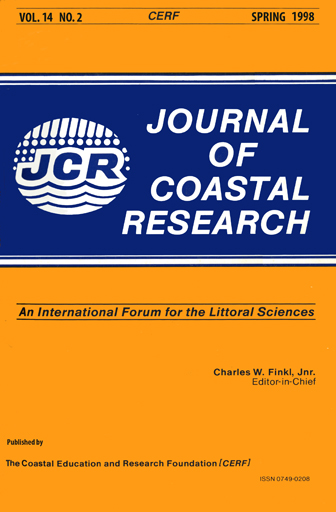The Assessment of Mangrove Areas using High Resolution Multispectral Airborne Imagery
Keywords:
Compact Airborne Multispectral Imager (CASI), remote sensing, Turks and Caicos IslandsAbstract
Airborne multispectral sensors combine many of the advantages inherent in both satellite systems and aerial photography. However, they have not been used in remote sensing studies of mangrove areas which have traditionally utilised the latter two approaches. High resolution (1 m) multispectral imagery of mangroves in the Turks and Caicos Islands was collected using a Compact Airborne Spectrographic Imager (CASI). Hierarchical agglomerative clustering with group-average sorting identified six mangrove classes which were used to direct a supervised classification (overall accuracy 78.2%). Normalised difference vegetation index (NDVI) was calculated from CASI data: linear regression models were used to predict leaf area index and percent canopy closure from NDVI. LAI and canopy closure data estimated from field measurements for a set of sites different to those used to derive the regression models, were used to test the accuracy of LAI and canopy closure prediction. Accuracy was defined as the proportion of accuracy sites at which the LAI or percent canopy closure value (as estimated from field measurements) lay within the 95% confidence interval for the predicted value. Accuracy was high: 94% for LAI and 80% for canopy closure. The superior spatial and spectral resolution of CASI allows mangrove areas to be assessed to a greater level of detail and accuracy than with satellite sensors. Some logistics for planning CASI campaigns are discussed.


